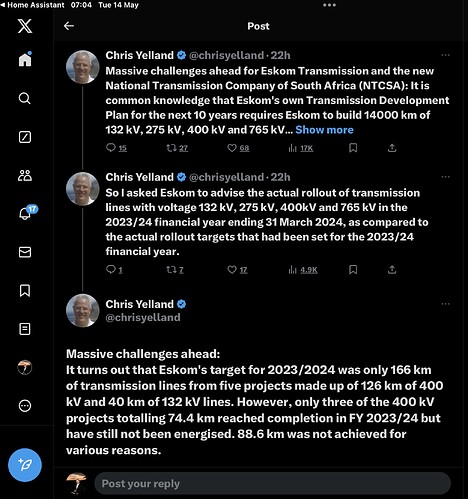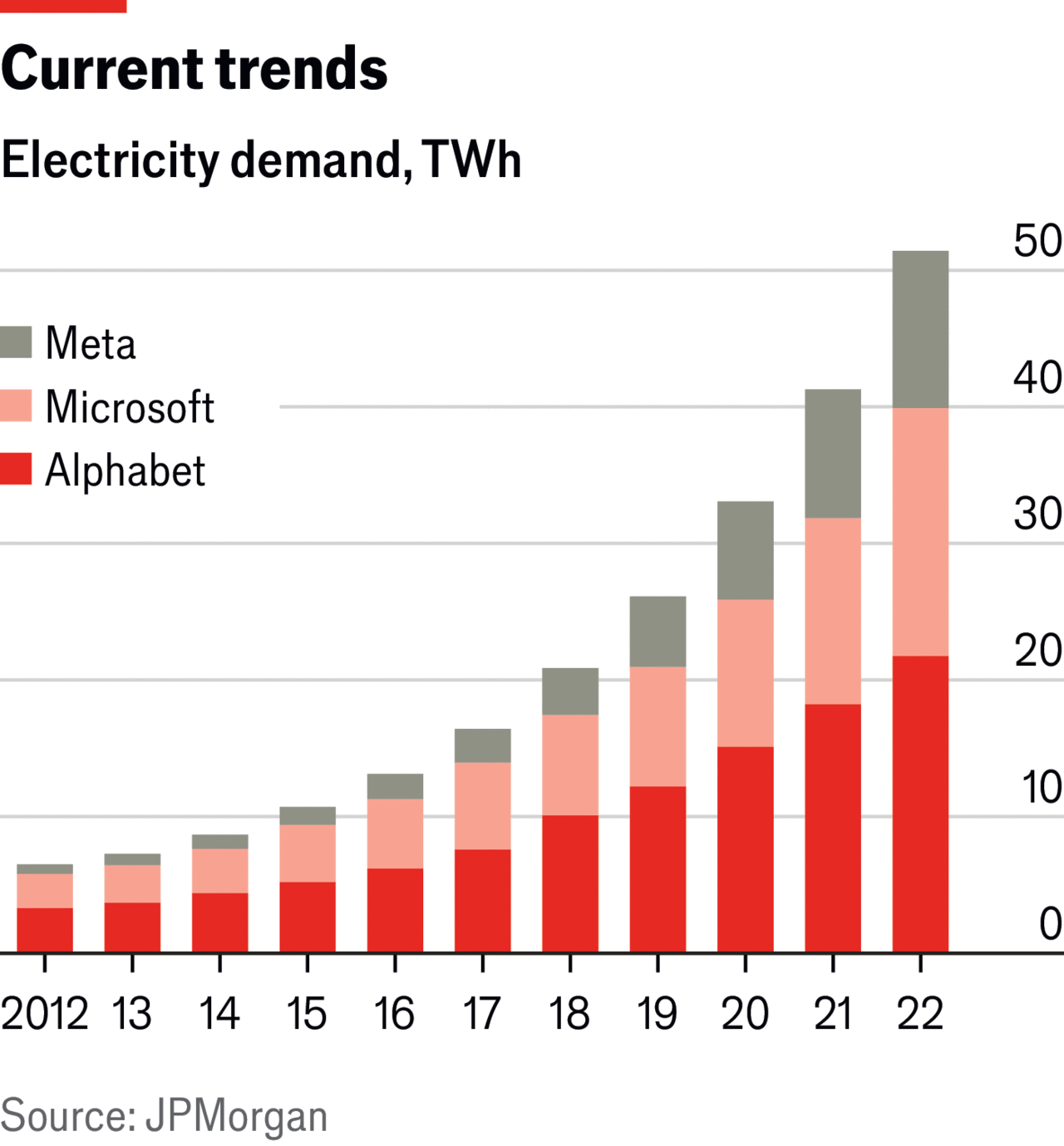Naughty you, Plonkster ![]()
Well, it worked. Within minutes some space started clearing up. By that afternoon I deleted my big file of zeroes, and suddenly we had lots of space left.
A few weeks later, our new server with the redundant power supplies and the fancy hardware RAID device was delivered. I just needed to buy time ![]()
Have pulled moves on clients too. You ask, you beg, you plead. No response.
Amazing how fast people listen when what the IT guy says is going to happen, “happens” one day when they least expect it.
It goes very far to help the client and more importantly, it helps the IT guy to get back to the “Boring(!!!) everything works.”
Drama happens. Better one controls the fallout or at least, mitigate it, before it becomes “This computer is sommer stupid. Phone someone and get them here NOW!!!” time.
Cudo’s to @plonkster for doing what he did.
Mostly, the point I am making is that the argument from Mbeki is a non sequitur, a fancy way of saying in Latin that the conclusion does not follow. Even if some “engineering” went into the first load shedding (and that is a concession for the sake of argument, it is hardly proven), to make it happen, it would hardly follow that therefore there was no problem. You would still have to explain away the simple fact that Eskom was nagging for more funding for a decade at that point. They unmothballed Komati and Grootvlei in 2003, and it doesn’t take a genius to see that if they had not done that, problems would have arrived much sooner. It also doesn’t take a genius, based on sustained load shedding after that, that there was a problem.
“Dude, you could have held on a minute longer!”
“What? You do realise the ambulance arrived a lot faster than the rescue team, right?”
I agree with you. Facts are presented.
But do we have all the intimate, intricate even, facts? The personal facts?
Every now and then a thought pops to mind, one I cannot ever prove … what IF this Eskom fiasco was a combination of “we have no idea what to do, but it will work tomorrow” with some nefarious characters knowing full well what is going on, will happen, who simply enforced the first part in order to achieve some other longterm goal/s?
Or it was simply sheer incompetence.
Or even as “banaal” as greed with no understanding of the consequences.
We will never know.
That it is complex, untold people involved, immense, a disaster, that is a fact.
You heard it here first:
Yup, Facebook was kind enough to promote the energy meter video straight into my feed this morning. I was rather hoping for a bit more than just halving the cost, which still puts that meter at almost 7k if I have my numbers right. That’s still about twice of what a decent MID-certified DIN-mount energy meter costs. I think there is still room for improvement.
But with that said, 7k is certainly a lot more appealing than the other side of 10k.
There is another one coming at Paardevlei, literally within eyesight of my house. I looked at some of the plans, it seems it is going to be an east/west setup. Of course some of the local residents are being NIMBYs about it, but it seems most of them dislike load shedding more… which helps ![]()
Yes yes, it is one of the sensationalist publications BUT, the titbits are the key takeaway.
But it does not look like they are running the OCGTs? (Well they are but really very little compared to when we were loadshedding, this week we had 10 hours of Eskom OCGT).
I think the mafia boss just ordered a halt on sabotage until after the elections.
Point taken but I think the KGB is a better description.
On that topic check out Turning Point on Netflix to see what the world was subjected to by them…
This seems to me to be much ado about nothing. I’m surprised de Ruyter thought he could get away with it.
The data is out there. OCGT use for the unexpected and worrying long period of normal service is substantially down. Eskom are not burning diesel like crazy, though how long this situation is going to last remains to be seen.
Now, it is possible that the graphs we get online are being manipulated. But Chris Yelland has published different graphs that tell the same story. There are also a lot of people who seem not to understand the difference between “year”, “financial year”, and “year to date” (or deliberately misuse these terms to get maximum impact).
But let’s say the data (including Yelland’s) has been falsified. Well, there is still a trail that can be followed because somebody will be selling an awful lot of diesel. That’s not easily hid.
The legislation to split off the grid from generation has already been passed. IPPs are being allowed into the game (a very large one opened recently and is feeding into the grid).
So much of what de Ruyter is talking about is under way.
Anyway, it seems likely to me that the most plausible explanation is the one given repeatedly. A combination of increased roof top solar reducing load, a scaling back of consumption because people are feeling the pinch of increased prices and because businesses have been closing (or putting solar on their roofs), IPPs coming on line, and better maintenance by Eskom.
The minister is claiming some credit for the last (or claiming it on behalf of Government). It is true that de Ruyter started this.
But there is a story about Napoleon who won a famous victory, but then had it put to him that the victory was due to spontaneous and bold manoeuvre by a junior officer.
Napoleon replied “perhaps. But if the battle had been lost, it would have been me that lost it.”
So we would verbally kick the Minister’s behind if load shedding continued and/or large amounts of diesel were burned, because the buck stops with him. Let him pat himself on the back
This article is a very interesting read (which backs what you’re saying)
This is also what the rich world faces.
This is from The Economist:
The coming surge in demand for electricity from data centres, artificial intelligence and cryptocurrency is an irresistible force about to encounter an immovable object. BCG, a consultancy, reckons data load, which accounts for about 2.5% of power consumption today in America, could triple by 2030.
The immovable object in this case is the electrical grid. Connecting new energy projects to the grid is a nightmare. In America the interconnection queue (the backlog of projects waiting to be approved) totals nearly 2,600GW-worth of proposals, around twice the size of all power capacity online in the country today—and the picture is not much better in Europe. Doubling or tripling the grid, even if it were feasible, would prove exorbitantly expensive.
Despite the hysteria about the coming AI-driven energy apocalypse, there are two reasons for optimism, as I explain in our latest edition: the deep-pocketed greenery of tech firms desperate for more clean power (see chart below) and the newfound willingness of frugal utilities to embrace innovative smart-grid technologies in order to provide that power.
The most intriguing potential solution to the coming crunch involves turning AI energy-guzzling into flexible loads. In the past data centres, though they used green energy, were rigid and demanding in terms of when and how they used power. Some in the industry think that will continue to be the case, with one veteran insisting that unless financial incentives are introduced for time-shifting (moving less-urgent tasks, such as AI training, to periods of fallow demand), customers will always demand immediate power: “When you want your query answered, you want it now.” On this view, only “firm” baseload power like that offered by fossil-fired plants or nuclear plants can possibly meet the coming surge in demand.
But a growing chorus disagrees. Nerds at the nexus of AI and energy are abuzz about a white paper produced in March by Sidewalk Infrastructure Partners (SIP), an outfit started in part by Alphabet (Google’s parent company). It unveils a detailed plan for designing data centres that incorporate microgrids, high-power batteries and advanced software that make time-shifting possible. Jonathan Winer, co-founder of SIP, says the first data centres using this design—dubbed Verrus—will probably be in Arizona, California and Massachusetts.
Devrim Celal, who heads Kraken, the AI-infused technology arm of Octopus, an innovative British electricity firm, is a long-time advocate. He is confident that there are ways to “flex” data centres. First, he believes the biggest potential savings will come from anticipating and varying cooling loads (which can be a third or more of the total energy needs of a data centre) more intelligently. Second, he thinks the legions of back-up power sources for the centres can be made smarter and connected to the grid, now that diesel generator sets are giving way to banks of lithium-ion batteries and fuel cells for back-up. Finally, he reckons some loads can be geographically shifted, with demand on global networks being directed to data centres in regions that are benefitting from clean, cheap power at a given moment. Kraken already does this, he reports, and the latency issues are minimal.
There is clearly an AI-driven energy crunch in the making. However, as is often the case, crisis brings opportunity: it could finally break the power-grid logjam.
Thanks for reading this edition of the Climate Issue. If you have any feedback, you can reach us at [climateissue@economist.com]
And there’s also the wheeling of power from one region to another. I presume Europe’s grid is fully integrated so if you are on that grid let’s see whose selling and at what price??
And the winner is…
.
.
.
They did that before, if memory serves … and the nation got livid.

